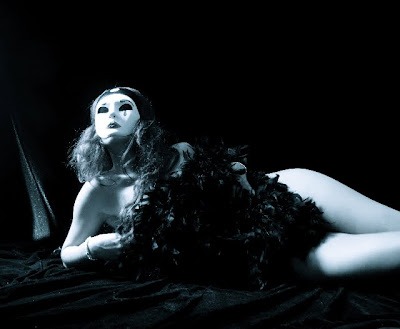
Many of the most recent self-portraits I’ve created have sought to express melancholy and grief. The art I make today has depicted uncomfortable sensations, like feelings of being overwhelmed and loosing hope. Because I engage my art as a journal of sorts, the photographs I create accurately chronicle one dimension or another of my life experience. They are by no means complete pictures, and they will often venture into dramatic extremes to illustrate the intensity of a particular emotion or event that is impacting me at the time. Nevertheless, each image I create, to one degree or another, consistently reflects facets of my immediate existence. Investing this emotional charge in my art invigorates my creativity, even when illustrating the darker sides of my life, as I have been doing of late.
In sharing such dark photographs with others, I’ve observed that this darker range of human experience appears to receive as much appreciation, as the former, brighter images did. These dark portraits seem to contain their own type of lure: perhaps they represent a world others are all too familiar with. After all, we have all had our dark nights of the soul. Or am I being too presumptuous by holding onto the belief that every one who appreciates the pain in my art, has themselves known pain, at one time or another?

What relationship does pain hold to art appreciation then? Does one have to be themselves familiar with pain, to recognize and appreciate it, in the work of the others? Or does one’s familiarity with pain, make artwork which depicts pain repulsive? Naturally, that will vary from person to person depending on their own relationship with pain itself, I imagine.
If we are drawn to creating, or appreciating, darker works of art, what does that say about us? Might there be a part of us that is actively engaged with pain? We may be either experiencing pain, facing pain, exploring pain, processing pain, or even at peace with pain! We may also be afraid of pain. Sometimes those who are too uncomfortable with pain, avoid facing it, even in art! It could be that aversion to such artistic creations will reflect this very discomfort. While those who are accepting of pain (and it’s role in human development), will, in turn, feel comfortable when exposed to art which reflects pain. Yet the opposite might also hold true!
Some may be drawn to art which depicts pain because they are subconsciously trying to face the discomfort of pain within themselves. And others experience a waning interest in such darker images, precisely because they have recently put personal pains to rest, and are making deliberate efforts to move beyond it. Then there are endless other possible reasons why one’s personal preferences in art may include or exclude “dark art”, as I’ve been calling it here.

With that in mind, as an artist, I always live in constant curiosity about what exactly moves others to appreciate my dark art. I can think of nothing more exciting then when someone takes the time to tell me why they have fallen in love with an image I’ve created. Why they appreciate it? What is it that it’s communicating to them? Especially with the darker portraits, I would like to know, what parts of human beings become engaged when admiring images into which I’ve injected loneliness, hopelessness, sadness, etc.
Perhaps it takes a certain kind of personal strength to appreciate, and even find beauty in art that illustrates the aching of a human heart. Today, I personally extend my gratitude to all those who do, as it inspires me to express every aspect of my being in my art, no matter how dark I may feel at the time. Every part is worth listening to and expressing. Thank you to all those who have reconfirmed this to me through all your wonderful appreciations. May we continue to include everything in art, even pain. I would love to hear your views on this subject, if you care to share.

To read more of my reflections on Expressing Pain in Art click here

































